You may have heard the term “horn” used for certain musical instruments. Sometimes, people refer to saxophones as horns. Is a saxophone really a horn?
Saxophones are technically woodwind instruments, and horns are typically brass instruments. When people refer to saxophones as horns, they usually do so when they are included with other brass instruments such as trumpets or trombones, often in a jazz band setting.
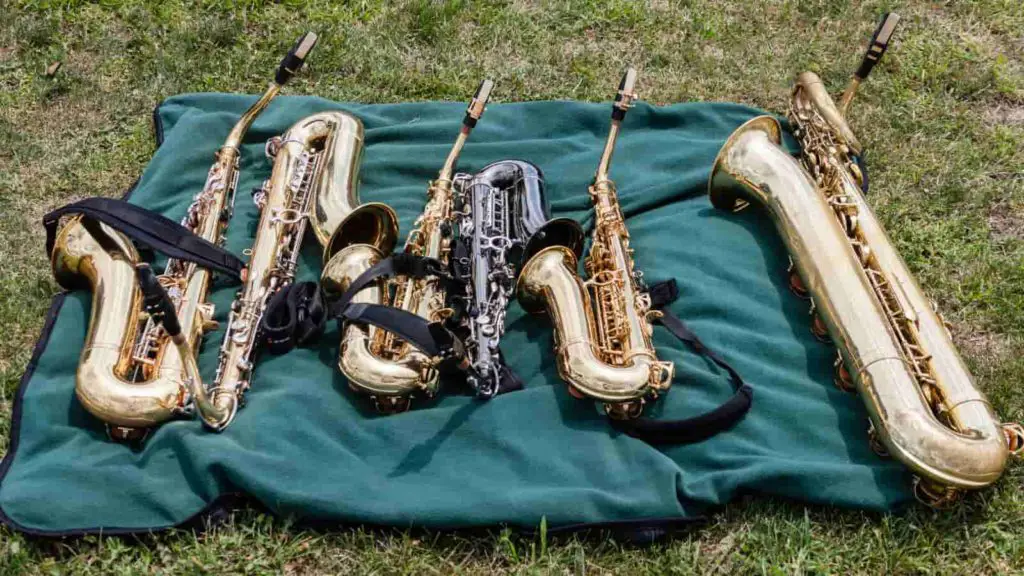
Referring to all wind instruments as horns saves time and adds clarity, especially when there is a rhythm section. A rhythm section in a jazz band can include percussion, piano, bass, guitar, or other instruments.
Note: The band director might ask the “horns” to play and saxophones will know to join, without the need to list every instrument group individually each time.
What other instruments are horns?
Musical instruments in a band setting that actually are considered horns are usually french horns. French horns are brass instruments and have large bells that flare out at the end to help project the sound. You can read more about brass instrument bells by reading our other article here.
Most people may be more familiar with a French horn, which has much longer tubing that wraps around much more than other “horns.”
They also have much larger bells that swell out at the end, so much so the player puts their hand inside to muffle the sound more. They also usually face the bell away from the audience, unlike other brass instruments.
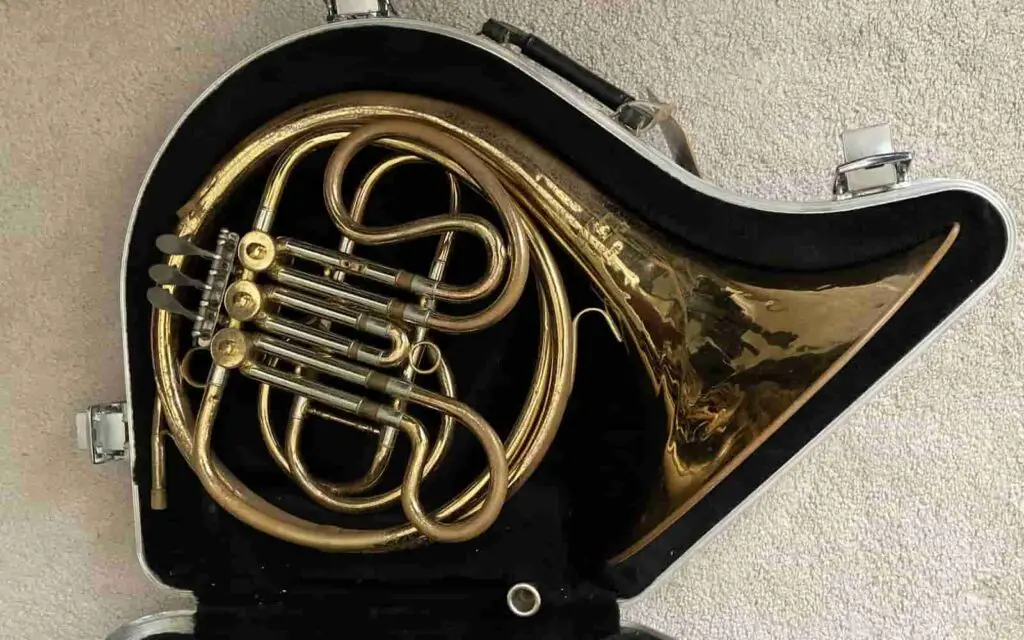
A horn was originally an actual animal horn, such as a ram, that someone would blow through and buzz their lips to signal events from a longer distance. Certain sounds or patterns would indicate something happened or was about to happen, such as a battle victory or necessary evacuation.
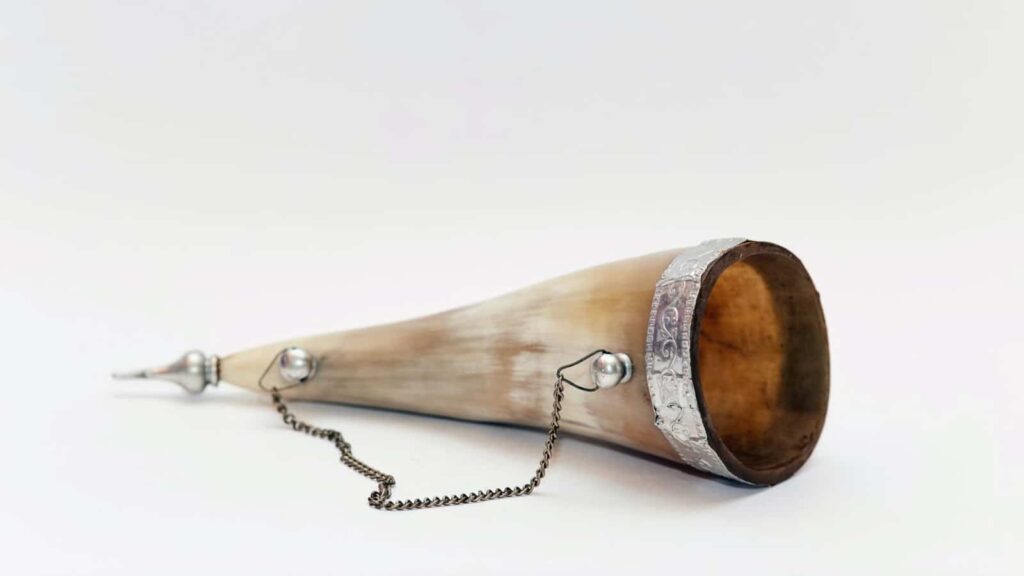
Over time, people started using different materials to make horns, such as brass (hence brass instruments). The way they produced a sound was always from lips vibrating in the “horn” even if it was not a literal animal horn.
Some consider the bugle to be one of the closest instruments to an original horn. This is because of its purpose of signaling/calling, since it has much less tubing than a French horn, and has no valves.
The image below is an original Rexcraft U.S. Regulation bugle, used in the Boy Scouts for the traditional calls: First Call, Reveille, and Recall. The same instrument and calls are used in the U.S. military, though the instrument has changed somewhat over time.
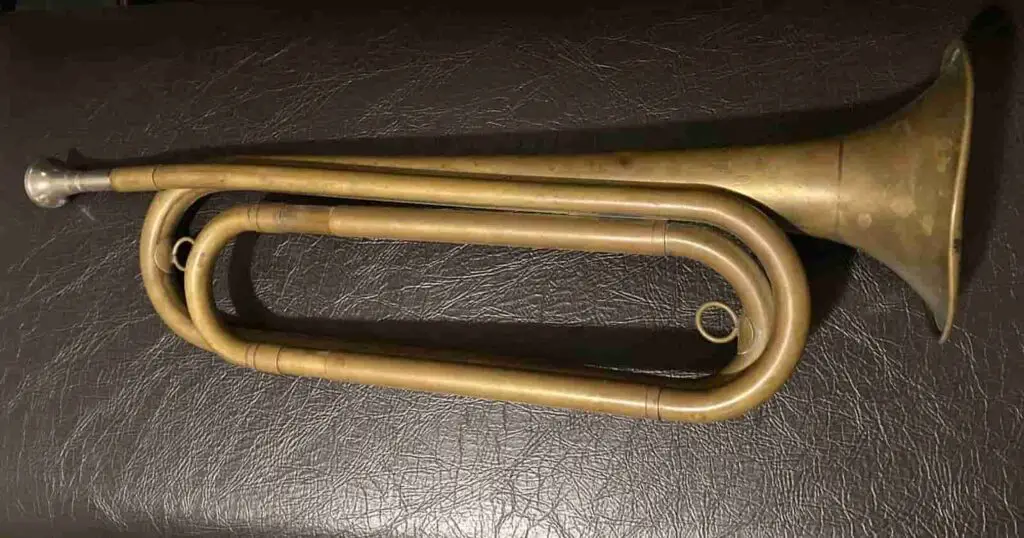
Other uses of the word horn relate to car horns which are used to signal events on the road. These kinds of horns function in a similar way but are usually hidden underneath the hood.
Instead of blowing air and buzzing your lips into the horn, the driver presses the center of the steering wheel which activates the electric horn we are so familiar with hearing on the road.
Do saxophones share similarities to French horns?
Like most French horns, saxophones are usually made of metal and have bells. Bells are the larger portion of the instrument that flares out at the end. The purpose of the bell is to project the sound more.
Saxophones were originally designed by Adolph Sax to capture certain elements of brass instruments while still being in the woodwind family. Saxophones can project more since the body is made with metal materials.
Top Tip: You can read more about why the saxophone is classified as a woodwind by reading our other article here!
Adolph Sax also implemented a fingering system characteristic of a woodwind instrument (much like the clarinet) and used a single reed on a mouthpiece to make a sound. Saxophones have a larger bell than a clarinet. Clarinets have bells but are relatively small in comparison; see the image below for a side-by-side comparison of an alto saxophone and a Bb clarinet.
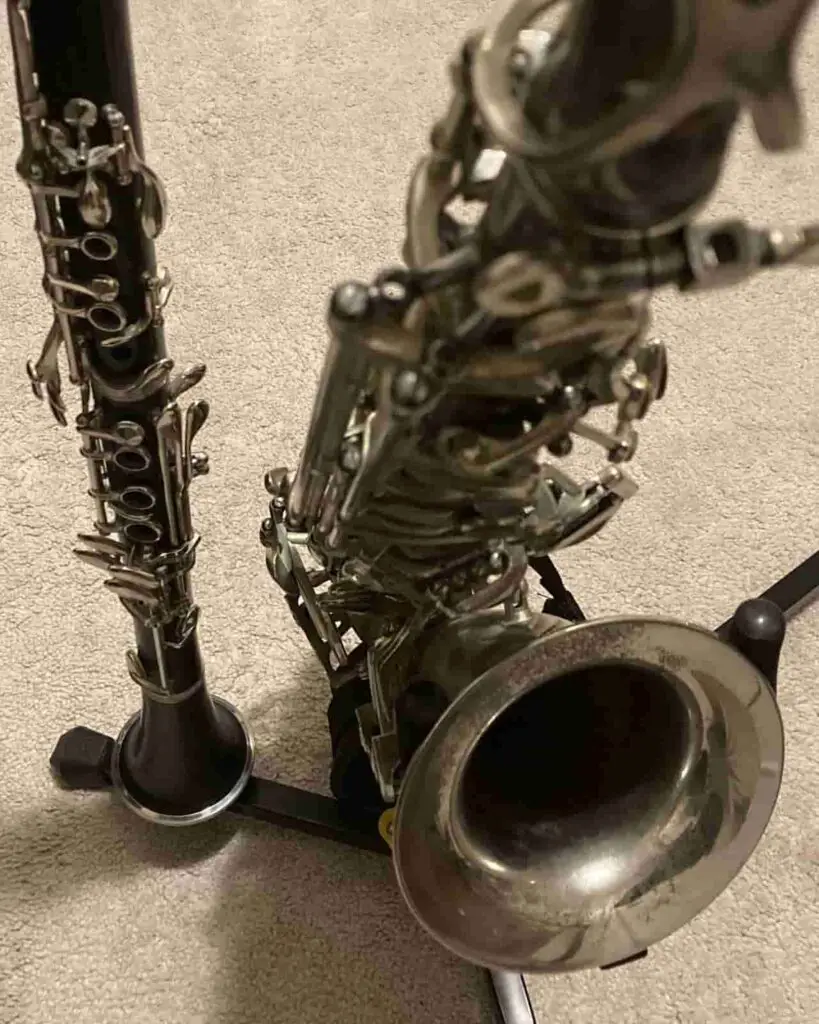
Saxophone players also typically play in the same instrument part range as French horns. Alto and tenor saxophones blend very well with the timbre and range of the french horn.
Note: Oftentimes, composers and arrangers will cross-cue French horn and saxophone parts, which means the musicians playing either instrument will play the same or a very similar part in the music.
At times, schools may not have very many French horn players but they might have a lot of saxophone players. Cross-cueing or doubling both parts fills in the instrumentation better. Many beginning band music uses a single horn part and a single tenor saxophone part (sometimes alto saxophone) that are the same.
Are there French horns in jazz bands?
French horns are usually not in jazz bands. Of course, you may encounter specific situations where you see a French horn in a jazz setting, but they are not standard. The “horns” referred to in jazz bands are usually trumpets and trombones; it also may include saxophones.
Note: Sometimes, you might hear the phrase “horn section” or “horn line.” This just means all of the wind instruments in the group.
Here is a rare example of a featured French horn soloist in “Wave” performed by the Sant Andreu Jazz Band.
Are there French horns in marching bands?
There are not usually french horns in marching bands, but the mellophone is a common instrument in marching bands.
Mellophones play in the same key and range as French horns but are held upright like a trumpet to make it easier to march with. French horn bells face lower and away from the body, down at the side, with the player’s hand in the bell.
Take a listen to mellophone highlights from DCI group Carolina Crown over the years.
Top Tip: You can read more about mellophones by going to our article here!
Are there saxophones in jazz bands?
Yes, as mentioned earlier in this article, saxophones are regular members of jazz bands. Saxophones emerged around the time jazz was becoming popular in the late 1800s and early 1900s, making it a great addition to jazz bands. People often pair saxophones immediately with the jazz genre.
You may have heard the legendary Glenn Miller Orchestra play “In The Mood” before; it starts with a famous saxophone part.
Are there saxophones in marching bands?
Yes, saxophones are usually regular members of marching bands. Most high school programs, colleges, and universities rely on saxophones to play the middle range of music.
Saxophones are versatile; they can blend with brass sections and project at louder volumes, but can also match the technical aspects of the other woodwind instruments (flutes, clarinets, etc.)
Note: Learn more about Marching Saxophones in this article.
Check out the saxophone feature from Hebron High School’s 2015 show “360” starting at the beginning of this clip.
You will see a great example of the speed and dexterity capable of a saxophone, while also being able to play at a louder dynamic to the audience.
Sometimes, there are specific “drum and bugle corps” that only have brass and percussion instruments (with the addition of a color guard). Over the past several years, there has been discussion if some of these drum corps groups will start accepting woodwind instruments as well.
The topic of allowing woodwinds in drum corps groups is controversial as it does not fit the normal regulations. Some are all for it, whereas others are strongly opposed.
Top Tip: Saxophones and mellophones (the equivalent of a “marching French horn”) have special roles in marching band shows. Get ideas on the perfect marching band show for them here!
Summary
While you may hear the word “horn” used to describe saxophones, you now know that technically they are not considered horns. They are often grouped together with other instruments and the term is used differently to describe a group of instruments.
This phrase became more commonly used so much so that people sometimes use the term loosely for a single instrument, calling it a horn. Hopefully outlining the differences between a saxophone and an actual horn provided clarity and helped you learn something new!
Additionally, we hope you enjoyed the exciting musical clips above highlighting the many appearances of saxophones and horns in different types of bands.
Disclaimer: This post may contain affiliate links. We only recommend high-quality products that are used and recommended by real musicians. If you use these links to buy something we earn a small commission.
